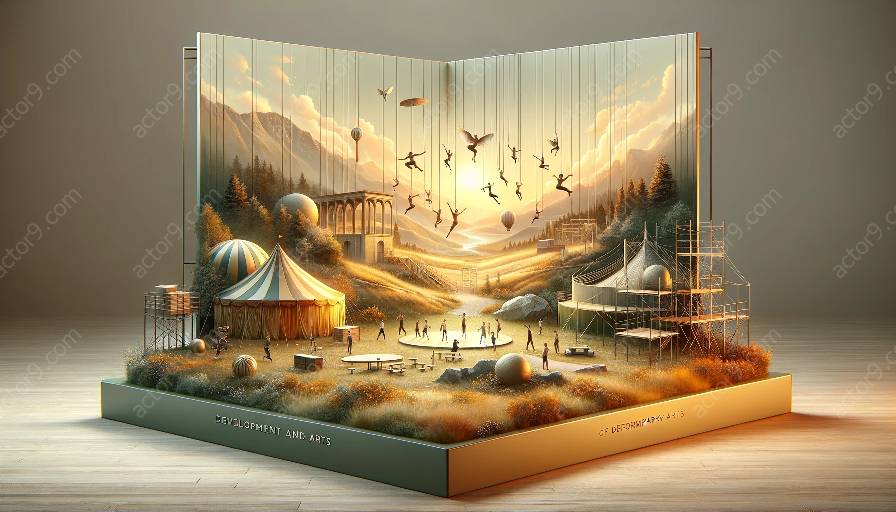Interdisciplinary collaboration in circus arts is a dynamic and evolving practice that plays a pivotal role in the development and training of circus artists and the overall circus arts industry. This topic cluster will explore the significance of interdisciplinary collaboration in circus arts, its impact, and how it contributes to the advancement of this unique art form.
Understanding Interdisciplinary Collaboration
Interdisciplinary collaboration refers to the interaction and cooperation between individuals from diverse fields or disciplines, coming together to work on a common goal or project. In the context of circus arts, it involves the synergy between performers, choreographers, musicians, costume designers, technicians, and other professionals to create innovative and awe-inspiring circus acts and performances.
Impact on Development and Training in Circus Arts
Interdisciplinary collaboration has a profound impact on the development and training of circus artists. By bringing together experts from various fields, circus arts programs and training centers can offer a more comprehensive and diverse curriculum that equips aspiring artists with a wide range of skills and knowledge. This holistic approach to training not only enhances the individual capabilities of performers but also fosters a greater understanding of the collaborative nature of circus arts.
Advancements in Circus Arts
Furthermore, interdisciplinary collaboration drives advancements in circus arts by promoting innovation and the cross-pollination of ideas. When professionals from different disciplines come together, they bring their unique perspectives and expertise to the table, leading to the creation of groundbreaking acts and performances that push the boundaries of traditional circus arts.
The Role of Creativity and Innovation
Creativity and innovation are at the heart of interdisciplinary collaboration in circus arts. By encouraging artists to think outside the box, experiment with new techniques, and blend different artistic expressions, collaborative efforts result in captivating and original circus acts that captivate audiences worldwide.
Fostering Creative Exchange
Collaborative projects provide the perfect platform for creative exchange among circus artists, choreographers, musicians, costume designers, and technicians. This exchange of ideas and perspectives not only enriches the creative process but also promotes a culture of continuous learning and artistic exploration.
Embracing Diversity and Inclusion
Interdisciplinary collaboration in circus arts champions diversity and inclusion. By bringing together individuals from various cultural, artistic, and professional backgrounds, circus arts celebrate diversity and embrace a wide spectrum of artistic expressions and influences. This inclusivity contributes to the richness and vibrancy of circus performances and elevates the art form to new heights.
Conclusion
Interdisciplinary collaboration in circus arts is a powerful force that drives the development and training of circus artists while propelling the industry to new levels of creativity and innovation. By fostering collaboration, embracing creativity, and championing diversity, circus arts continue to captivate and inspire audiences around the world, shaping the future of this extraordinary art form.


































